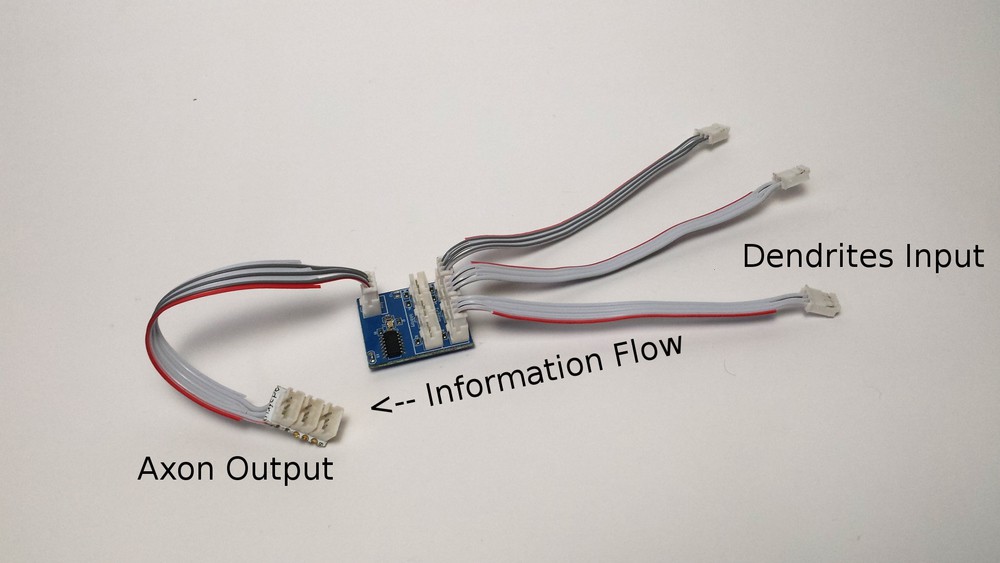Time to update the Details page; while the project logs are current, the main NeuroBytes project page is woefully outdated. The pre-10/10/2016 page is shown in this log.
Thanks for checking out NeuroBytes.
We are excited and honored to be selected as one of the ten Best Product finalists. This section was updated a few times prior to the finals deadline, most recently on 9/21/2015. The previous Details section is here. We also put together a log update that covers the entry requirements.
What are NeuroBytes?
NeuroBytes are tabletop electronic neuron simulators that can be freely connected to form simple biological neural networks. Each element of such a network has a number of inputs, called dendrites, that can be activated by upstream NeuroBytes modules or environmental sensors. The elements, roughly the size of postage stamps, can also send signals to downstream NeuroBytes via an onboard axon connector, or they can activate output devices such as servo motors.

The product is currently in its fourth generation. Previous NeuroBytes iterations, v0.1, v0.2, and v0.3, were progressively refined prototypes that gave our team the confidence to scale up production a bit to produce a usable quantity of devices. The current version was developed with a number of goals in mind chiefly related to low per-unit cost and home manufacturability. The rough BOM cost came to around $3.50/unit (including the circuit board) and once the design was finalized we started producing NeuroBytes.
Along with roughly 100+ working devices, we have also put together various accessoriesand sensors, along with a few interesting “case studies”: a skittish cellphone box robot, atwitchy cardboard limb, a touch-sensitive MeArm, and a realistic leg model.
Why are you doing this?
@NeuroJoe said it best in the first part of our THP2k15 finals video: we think neuroscience education is really important. Most major neurological diseases areincurable. We still don't understand basic features of the brain, such as memory and consciousness. So we need to inspire the next generation of scientists to study neuroscience, and that starts with improving STEM education.
We believe that NeuroBytes will increase student engagement with neuroscience, robotics, electrical engineering, and other varied and important fields of study. Our platform is unique in that it is hands-on rather than virtual, and yet still retains the ability to grow with students as they progress through secondary school and higher education.
We also want NeuroBytes to engage the greater programming and hardware communities. Hobbyists and lifelong learners can learn how NeuroBytes are assembled, understand how they are programmed, and ultimately modify how they behave while also gaining new knowledge about anatomy and physiology. To encourage this activity, NeuroBytes are completely open source--both hardware and firmware--licensed under the General Public License, Version 3.
Who are you?
Joe Burdo is the neuroscientist on the team and works on identifying neuron behavior in real nervous systems to model in a simplified manner, as well as educational curricula. His background is in undergraduate education and neurodegeneration research.
Zach Fredin designed and manufactured the current generation of NeuroBytes prototypes. His background is in materials science and engineering (with a long history of electronics tinkering), so he's been learning a lot about neuroscience as of late.
After collaborating together since February of 2015, we have confirmed that our skills complement each other quite well for this project.
 zakqwy
zakqwy



Discussions
Become a Hackaday.io Member
Create an account to leave a comment. Already have an account? Log In.